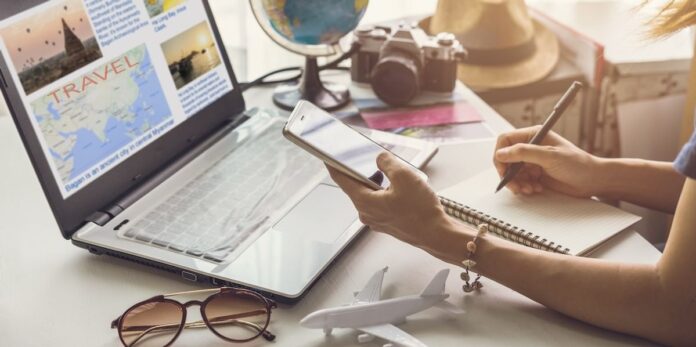Travel
planning today has a significant bottleneck problem, best described as a
constricted hourglass. At the top, there’s an abundance of inspiration – a
flood of dreamy destinations, vibrant cultures and picturesque landscapes, all
delivered through social media, blogs and meticulously crafted articles.
However, this surge of inspiration hits a narrow bottleneck when it comes to
the actual planning and booking stages, where most consumers are left to fend
for themselves.
Hourglass top: Inspiration overload
Consumers are overwhelmed
with inspiration. They see Instagram images of pristine beaches, read blog posts
about hidden gems in Europe, and watch YouTube videos of adventurous travel
experiences. While these sources ignite the wanderlust in many, they are not
actionable. The inspiration does not seamlessly translate into a structured
plan or an easy booking process. Sure, there may be links to specific
businesses mentioned, but this still requires consumers to peck and hunt one
aspect of their trip at a time. This leads to the middle of the hourglass,
where consumers struggle to make sense of the plethora of ideas they’ve
gathered.
Narrow middle: Planning pain points
When it comes to actual
trip planning, consumers often resort to spreadsheets and numerous tabs of
information on their browsers. All of those places where inspiration once
struck are scattered all over the place. Consumers are left to their own
devices, juggling between different websites to compare prices, check
availability and piece together their itinerary. This process is not only
time-consuming and cumbersome, but it often leads to frustration and even trip
abandonment. Herein lies the problem: the disconnect between the inspiration
phase and the planning phase.
Hourglass bottom: Disjointed booking
Once consumers finally
have a plan, they must navigate through dozens of booking websites to finalize
their trip. This fragmentation not only adds to their workload but also creates
a disjointed experience. The inspiration that once excited them is now buried
under the stress of planning and booking logistics. And when they get on the
trip itself, they are left to create a folder of booking receipts and tickets
to make sure everything is accessible at the moment they need it. What if there
was a way to streamline this process, to bridge the gap between inspiration and
action seamlessly?
What if
consumers could start from anywhere inspiration strikes and dive directly into
planning and booking, without the hassle of multiple steps and platforms?
Reimagining the hourglass
Subscribe to our newsletter below
Today,
content creators are publishing beautiful and comprehensive inspirations that
are not very actionable. If they do include links, those links are to a
specific business or online travel agency, but even then it does not allow their audience to
grab every recommendation in one fell swoop. What if consumers could go
from, say, an article on the top 10 attractions in California, or a YouTube or
TikTok video of these highlights, right into their own version of the entire
trip that was recommended? A place where they can not only customize the trip
and make it their own, but also book every aspect of it, all in one place.
This is not just a vision; it is quite possible for the
first time thanks to the power of artificial intelligence. AI has gotten so
good it can take almost any link or image and translate the content into a
trip plan within seconds. Even something like the example below can be
identified and added to your trip plan for planning purposes.
Empowering publishers, creators, consumers
I know what
you are thinking. Won’t this upset the publishers and content creators who put
their blood and sweat into creating the content itself? Generative AI certainly
has people on edge. Everyone is worried about the impact to their content’s
value when it is accessible through AI. But let’s flip this on its head for
a moment. What if that content could become more valuable? What if enabling AI pushes publishers and
content creators closer to the transaction than they are now?
Today,
consumers get inspired by this content and then turn to search engines for
planning and booking, leaving publishers and content creators uncompensated.
OTAs are spending billions of dollars catching those searches generated by that
inspirational content. And things are getting worse versus better. With AI
summaries popping up in search results, travel related content is seeing a
reduction in traffic, further diminishing the return on investment.
It is time
for publishers and content creators to embrace this new technology for
themselves. Much like Uber and Airbnb turned unused inventory (a car or a room)
into new revenue streams, AI can unlock existing travel content’s full
potential, providing a new revenue stream that is a win-win for publishers,
creators and consumers alike.
Bridging the gap
The hourglass problem in travel planning is a significant barrier to a seamless travel experience. By reimagining the process and integrating advanced technology, we can bridge the gap between inspiration and booking. AI offers a promising solution that empowers both publishers and consumers, transforming the way we plan and book our travels. It’s time to embrace this change and lead the way to a more efficient and enjoyable travel planning experience.
About the author …


